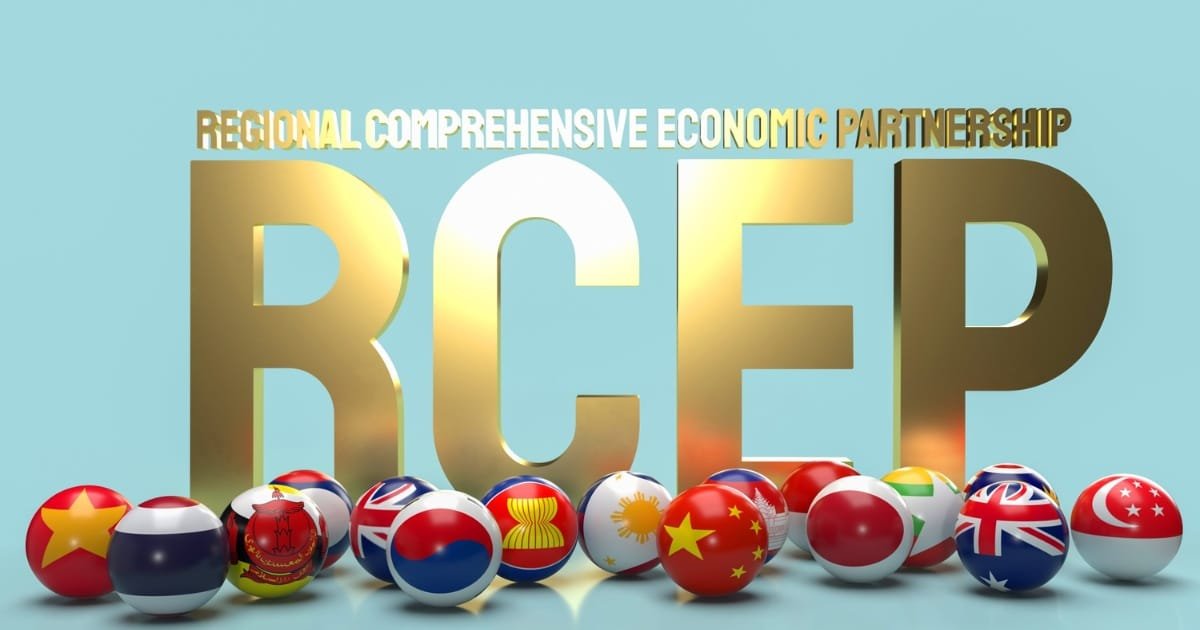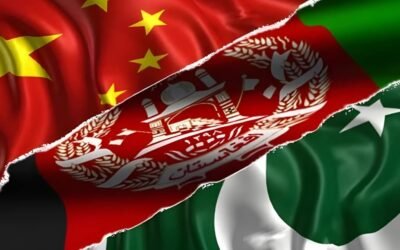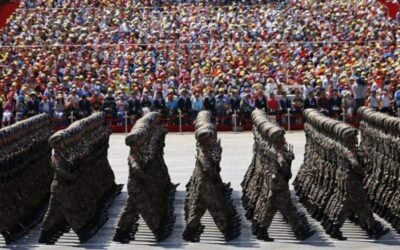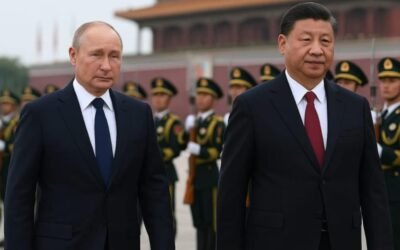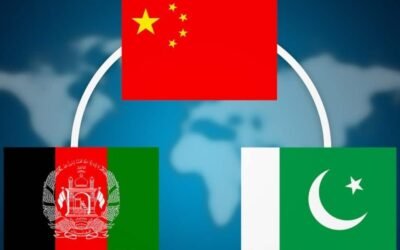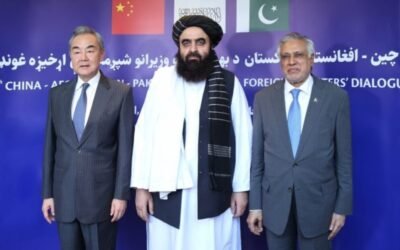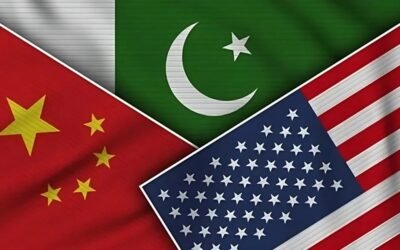The Regional Comprehensive Economic Partnership (RCEP) is a huge trade deal among 15 Asia-Pacific economies. It includes ASEAN-10, China, Japan, South Korea, Australia, and New Zealand. The pact links one-third of the world’s population. It also covers about 30% of global GDP. RCEP works by harmonizing trade rules. It cuts customs duties on 90% of goods over 20 years. The deal also targets trade barriers. It seeks to improve logistics. It reduces non-tariff barriers across the region.
The bloc already makes up 27% of global trade. Signed in 2020, it now covers 30% of world trade and people. Experts say it could add $500 billion in trade within a decade. The deal strengthens integration in Asia. It aims to create a liberal and competitive trade system. It also lowers non-tariff barriers. Trade rules become more transparent. The agreement is reshaping Asia’s economy. Pakistan cannot overlook this shift. Analysts point out that the members account for 29% of global GDP. This shows the scale of the pact.
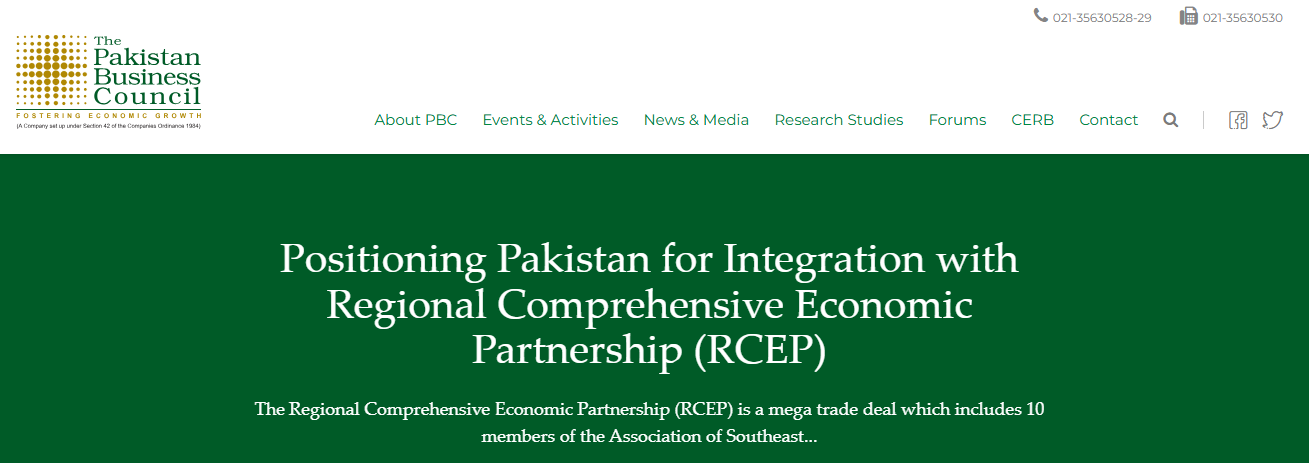
Source: The Pakistan Business Council
Pakistan’s Trade Potential Within RCEP
Pakistan is a small trader within RCEP. Its share in the bloc’s global value chains is about 0.08%. RCEP economies together make up nearly a quarter of world output. Still, 17% of Pakistan’s exports go to RCEP members. Around 36% of imports also come from these countries. Exports are mostly cotton, textiles, rice, and farm goods. Yet RCEP markets also need manufactured and high-tech products. Pakistan can expand in electronics, IT, pharmaceuticals, and processed foods. Research by PBC shows tariff concessions could help Pakistani goods enter these markets. Many local products with a comparative advantage could benefit. Access to the Chinese market could also improve. Textiles and apparel, where Pakistan is strong, may gain new export chances under RCEP tariffs.
Indirect Benefits of RCEP for Pakistan’s Trade and Industry
Pakistan can gain indirectly as RCEP economies boost trade among themselves. A key factor is the unified rules of origin. Products need only 40% content from inside the bloc for duty-free access. The rest, up to 60%, can come from outside. This opens a gateway for Pakistan to join regional value chains. Local firms can supply raw materials or intermediate goods. These inputs can enter RCEP production networks. Finished products would then qualify for tariff breaks. This gives Pakistan indirect benefits without being a member.
Lower barriers in RCEP expand markets across the region. Analysts say Pakistan’s exports to members could triple if it joined. Even without membership, Pakistan gains from cheaper machinery and inputs. RCEP tariff cuts lower the costs of components. This helps local industries stay competitive. An expert notes that Pakistan gets reduced tariff costs and better access to inputs. He added that it would make trade policy simpler, more transparent, and predictable. It could also revive investment by pushing reforms in trade and investment.
Dr. Manzoor Ahmad, an International Trade and Customs Expert, spoke at the event. He said Pakistan must consider two factors before joining RCEP. One is capacity. But more important is intention. These factors improve export strength. Businesses can link into supply chains across Asia. Trade networks under RCEP give indirect opportunities. Pakistan can use this boom to raise its role in regional trade.
Signed in Nov 20, #RCEP pools a market of 3 billion people & 30% of the #world‘s #GDP. What does it entail and what it means for #Pakistan? Honored to have @_AnabelG discussing this and more, along w/top class panelists @anzur & @hasaankhawar. #trade #PakThink @WBPakistanCD pic.twitter.com/0WeV6ouacW
— Gonzalo Varela (@gonwei) February 5, 2021
Reforms Pakistan Must Pursue While Staying Outside RCEP
Staying outside RCEP has clear risks but also pushes reforms. Member countries will enjoy tariff preferences with each other. This makes it harder for Pakistani exports to compete. Analysts caution that Pakistan may lose market share to RCEP producers. To avoid this, experts stress the need to cut trade costs and upgrade industries.
In practice, policy advisors propose measures like:
- Overhaul transport and logistics: Upgrade roads, ports, and railways to cut costs and reduce delays.
- Streamline trade procedures: Simplify customs clearance and documentation for faster, cheaper exports.
- Support exporters: Provide financing, training, and information to help businesses, especially SMEs, meet global standards.
- Focus on strong sectors: Strengthen niches like textiles, IT, pharmaceuticals, and high-quality foods while investing in digital trade platforms to access global buyers.
Such steps, aligned with Pakistan Business Council advice, can help the local industry secure indirect gains from RCEP while easing competitive pressure. RCEP members will gain clear advantages, but Pakistan can still respond. The country must accelerate reforms. Efficiency, lower trade costs, and stronger exports are the way forward. The goal is to build a resilient and export-driven economy.
Conclusion
RCEP’s trade boom brings both opportunities and challenges for Pakistan. Analysts point out that the pact is open to new members, and Pakistan could apply in the future with China’s support. Until then, the focus should be on closer ties with RCEP markets and domestic reforms. Deeper bilateral FTAs and alignment with Asia-Pacific standards can help. Stronger industries in areas of potential are also key. This way, Pakistan can turn RCEP spillovers into real gains. A PBC report notes that joining or aligning with RCEP could revitalize trade through cheaper inputs, wider markets, and foreign investment. A proactive and reform-driven approach is seen as the right strategy to secure Pakistan’s economic future.
You May Like To Read: PM Shehbaz Sharif Invited to China for Military Parade Marking 80th Anniversary of Anti-Fascist Victory

